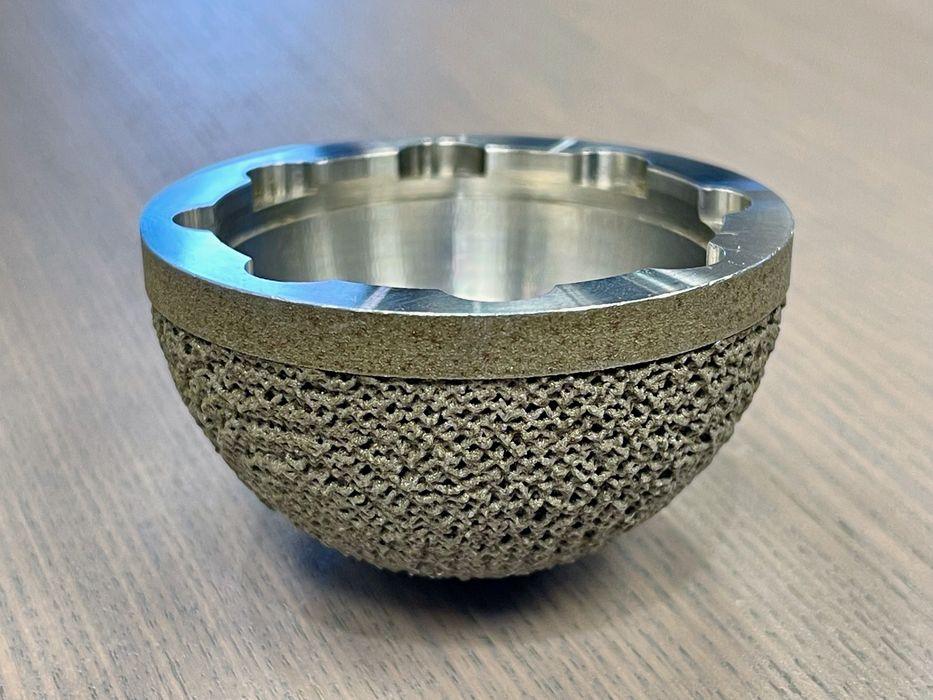
Until very recently, the idea of three-dimensional printing seemed somewhat futuristic.
In the iconic Star Trek television franchise, for example, machines called replicators create objects seemingly out of thin air. Indeed, the very first reference to what we now know as a 3D printer dates back to 1947 in an obscure science fiction novelette by British writer Eric Frank Russell.
Fast-forward to the 21st century, and 3D printing has become an integral part of everyday life. Today, 3D printing is used in a variety of applications, helping fuel production, advancement, and innovation across industries while reducing costs. Materials — like plastics, ceramics, metals, and even human cells — are being used to print vital components for many different industries.
How 3D Printing Is Revolutionizing the World
We’ve come a long way since the 1980s when inventors Charles Hull and Scott Crump were issued the key patents for stereolithography and FDM 3D printing. Thanks to continued technological advancements and research into 3D printing, everyday citizens and company leaders alike can access the tech without breaking the bank — and that’s just the beginning of the revolutionary potential of 3D printing.
Despite the myriad positives of 3D printing, the tech has seen skepticism over the years — especially from those with careers in manufacturing. But that’s all changing now. The good news is that you don’t have to worry that robots may be taking your job. In fact, the continued 3D print revolution is could create millions of highly skilled jobs.
It’s easy to see that the benefits far outweigh the downsides of 3D printing, and the technology continues to transform industries at a rapid pace. Let’s take a look at five industries that are leading the pack and successfully using innovative 3D-printing tech to their advantage.
1. Healthcare
The medical community has long been interested in 3D printing technology, which boasts numerous useful applications in healthcare innovation. For example, 3D printers can construct replacement body parts to perfectly fit a patient using different materials, like plastic and titanium. Other healthcare applications include printing anatomical models for educational purposes or complex surgical planning. Those are only the beginning, as research into 3D printing applications in healthcare is ongoing.
In June 2022, the medical community reached a milestone in 3D printing with the successful transplant of a 3D printed ear made from human cells. Doctors in Mexico created and transplanted the 3D organ onto a woman with a rare birth defect, and more complex procedures are no doubt under development. Medical professionals hope that the procedure will become the standard of care when it comes to ear reconstruction.
2. Travel and Hospitality
After a lengthy period of pandemic-related social distancing, many global citizens are making up for lost time by visiting new places. Those travelers may get there with a little boost from 3D printing technology. 3D printing enhances travel by making it faster, cheaper, and safer. The aerospace industry has significant plans to evolve while utilizing 3D printing.
Additive manufacturing technology can help reduce the weight of aircraft and improve heat resistance, and airlines and aviation companies of all sizes are getting in on the action. Airbus, for example, has lofty plans to assemble and fly an entirely 3D-printed aircraft by 2050. In the meantime, however, the company has begun to reduce aircraft weight by replacing bulky parts with 3D printed versions.
And once travelers land, 3 -printing technology may be encountered at hotels. The world’s first 3D printed accommodation opened in 2016 in the Philippines, and countless more have popped up around the world since then.
3. Construction
The construction industry uses many emerging technologies to its advantage. 3D printing helps support a wide variety of projects. On a small scale, building designers use 3D printing to create models of structures which are then used to assess a project’s feasibility, test a variety of design plans, and effectively capture the overall project vision.
In recent years, 3D printing has advanced even further and can now be used to create full-scale structures using concrete extrusion, often at a lower cost than traditional construction methods. 3D printing may also save time and reduce labor costs. For example, the construction of the world’s first 3D-printed office building, Dubai’s Office of the Future, took just 17 days to complete.
4. Automotive
The automotive industry is also getting a boost from 3D printing. Consumers have more options than ever when buying and maintaining their vehicles. Home-based mechanics with a 3D printer on hand can often create their own replacement parts to complete a project. Further, major automobile and parts manufacturers are using professional and industrial 3D printers to design and produce high-strength parts at a lower cost.
These parts can be after-market parts that actually custom fit the vehicle at hand. Automotive 3D printing may even expand to cars that are fully printed using this technology. For now, parts are more efficiently made and customizable — even allowing custom parts to be made for drivers with disabilities. 3D printed parts are cheaper to test and manufacture, making the process a financial win for all parties involved.
5. Toys and Games
In addition to automobiles, 3D printing technology sees widespread use across other subsets of manufacturing, including the $271 billion toys and games industry. Today, toys can be manufactured at a faster rate than ever before and with greater design precision. Further, 3D printing allows for toy customization by both companies looking to stand out from the competition as well as savvy consumers with a 3D printer on hand.
Key Takeaways
The future of manufacturing looks bright, thanks in large part to continued innovations in 3D-printing technology. Considering that 3D printing is revolutionizing industries — like healthcare, manufacturing, and travel — it’s clear that the technology is here to stay.
